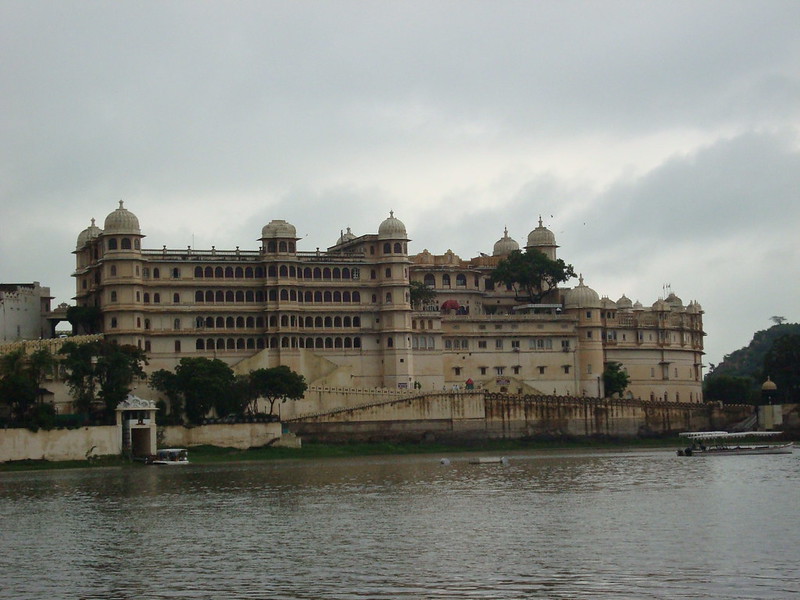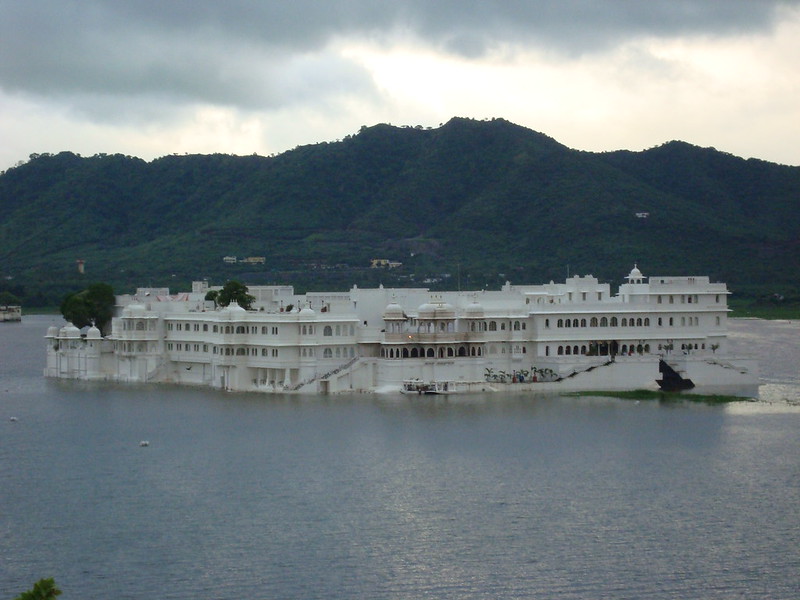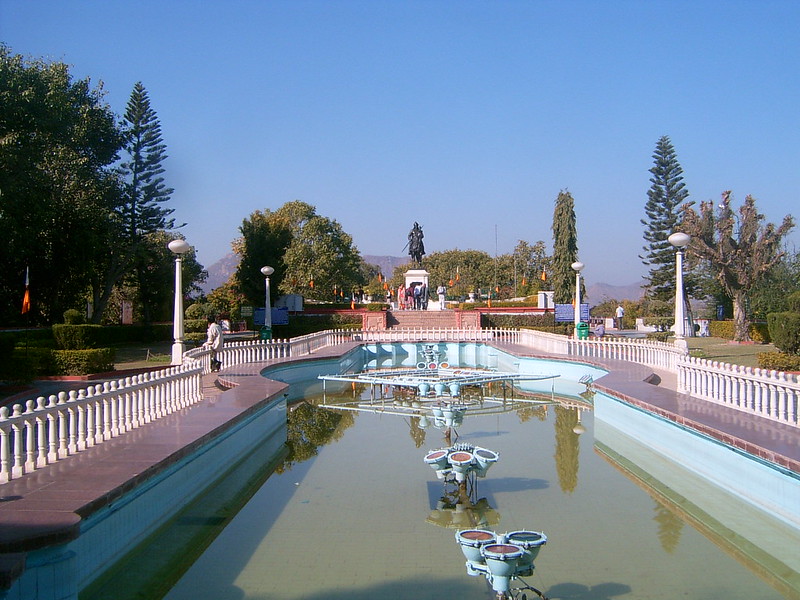| Destination: Udaipur |
| Destination Type: Fort and Palaces |
| City: Udaipur |
| Country: India |
- Private Tour: Udaipur City Tour with Eklingji and Nagda WITH GUIDE
- Full Day Tour of Eklingji Nathdwara & Rajasmand Via Nagda Ex. Udaipur/Rajasthan
- Full Day Trip to Nagda, Nathdwara & Haldighati Ex. Udaipur/Rajasthan
- Chittorgarh Fort Tour Ex. Udaipur / Rajasthan
- Private Tour Ranakpur Jain Temple Complex from Udaipur With Guide
- Private Full-Day Tour of Kumbalgarh Fort from Udaipur WITH GUIDE
- Private Tour: Udaipur City Tour with Boat Ride on Lake Pichola With Guide
- Private Tour: Kumbhalgarh Fort and Ranakpur Temples from Udaipur WITH GUIDE
- Private Transfer Udaipur to Jodhpur via Ranakpur Jain Temple WITH GUIDE
- Half Day Tour of Eklingji And Nagda - Udaipur
- Transfer from Udaipur Airport/Hotel to Udaipur City Centre
By Air : Dabok Airport, also known as Maharana Pratap Airport is the closest at about 25 km northeast of the city centre. There are daily flights from Delhi and Mumbai on Jet Airways, Air India and SpiceJet.
By Road : Udaipur is easily accessible by road from every major destination in India, including Chittorgarh, Ahmedabad, Jodhpur, Ajmer, Sawai Madhopur / Ranthambore, Jaipur, Bikaner, Agra, Delhi, Mumbai and Khajuraho.
By Rail : Udaipur is connected by rail to several major cities in India including Chittorgarh, Ahmedabad, Ajmer, Sawai Madhopur, Jaipur, Agra, Delhi, Mumbai and Khajuraho.
Often referred to as the ‘Venice of the East’, the lake city of Udaipur is known as the centre for performing arts and crafts. The famous Lake Palace, located bang in the middle of Lake Pichola is easily one of the most beautiful sights of Udaipur. Udaipur is also home to Jaisamand Lake, the largest artificial lake in Asia. The beautiful City Palace and Sajjan Garh (Monsoon Palace) add to the architectural beauty and grandeur of the city. The city is also known for its profusion of zinc and copper mines. The solar observatory in Udaipur is known as one of the best in Asia and has been modelled after the Solar Observatory at Big Bear Lake in Southern California. Udaipur is also renowned for is miniature paintings. The Shilpgram festival, held sometime around the New Year manages to pull in great crowds of people interested in arts and crafts.
Udaipur was founded in 1559 by Maharana Udai Singh II as a new capital of the Mewar kingdom. It is located in the fertile, circular Girwa Valley to the southwest of Nagda, which was the first capital of Mewar. Until Udaipur was built, the capital of Mewar was Ahar, a flourishing trade town.
Udaipur City Palace : The City Palace towers over the Pichola Lake. The balconies, cupolas and towers of the palace give a wonderful view of the lake and the surrounding city. This complex actually consists of four major and several minor palaces that collectively form the magnificent City Palace. The main part of the palace is now preserved as a museum displaying ancient artefacts.
Lake Palace : Now a hotel, The Lake Palace was originally called Jag Niwas Palace and served as a summer palace. Built between 1743 and 1746 on the island near Jagmandir Palace in Lake Pichola, the palace, which faces east, is a wondrous sight to behold. The walls made of black and white marbles are adorned by semi-precious stones and ornamented niches. Gardens, fountains, pillared terraces and columns line its courtyards.
Jag Mandir : Jag Mandir is a palace built on an island on the Lake Pichola. Also called the ‘Lake Garden Palace’, the construction for this began in 1551 and was completed around 1652. The royal family used the palace as its summer resort and for hosting parties. Interestingly, Prince Khurram - later Emperor Shah Jahan - was given shelter here when he rebelled against his father Emperor Jahangir. The palace had such an impact on Emperor Shah Jahan that it went on to become the inspiration for one of the most magnificent Wonders of the World, the Taj Mahal.
Monsoon Palace : Situated just outside Udaipur, this 19th century palace is built on top of Bansdara Mountain. Used as a monsoon palace and hunting lodge, its builder, Maharana Sajjan Singh, originally planned to make it an astronomical centre. The plan was cancelled with Maharana Sajjan Singh's premature death. It is still an awe-inspiring sight on the Udaipur skyline and offers spectacular views of the city and the areas around.
Ahar Museum : Ahar Museum is in close proximity to an impressive cluster of cenotaphs of the Maharanas of Mewar. The museum has a small, but rare collection of earthen pottery. You can also browse through sculptures and archaeological finds, a few dating back to 1700 BC. A 10th century metal figure of Buddha is a special attraction here.
Jagdish Temple : An example of the Indo-Aryan style of architecture, Jagdish Temple was built in 1651 and continues to be one of the most famous temples in Udaipur. Dedicated to Lord Vishnu, the structure is an architectural marvel with carved pillars, graceful ceilings and painted walls. This three-storied temple was built by Maharana Jagat Singh.
Deen Dayal Upadhyay Park : For an evening out, the Deen Dayal Upadhyay Park is a great destination. This beautiful garden is built around Doodh Talai and provides a spectacular view of Jag Mandir, Lake Palace, Lake Pichola and City Palace. Musical fountains, a ropeway to the Karni Mata Temple and a sunset spot complete the outing.
Fateh Sagar Lake : This delightful lake, bordered by hills and woodlands, lies to the north of Lake Pichola. This artificial lake is connected to Lake Pichola by a canal. The lake houses the beautiful Nehru Island as well as an islet on which stands the Udaipur Solar Observatory. It was inaugurated by the Duke of Connaught and was initially called Connaught Bundh.
Lake Pichola : Pichola was the name of a village that was submerged and lent its name to the lake when it was expanded. The islands of Jag Niwas and Jag Mandir as housed in this lake. Along the eastern banks of the lake lies the City Palace. A boat ride in the lake around sunset offers a breathtaking view of the Lake and City Palaces.
Saheliyon ki Bari : Built by Rana Sangram Singh as a garden for women, Saheliyo-ki-Bari or the Courtyard of the Maidens is a popular tourist destination. Along with a small museum, it has several attractions such as marble elephants, fountains, kiosks and a lotus pool.
Gulab Bagh and Zoo : Gulab Bagh (Sajjan Niwas Garden) is the largest garden in Udaipur. Spread over 100 acres, the garden proudly displays innumerable species of roses, from which it also gets its name.
Sukhadia Circle : Sukhadia Circle lies to the north of Udaipur. It comprises a small pond that also houses a 21 foot tall, three-tiered marble fountain. Decorated with beautifully carved motifs, the fountain looks spectacular at night when it is lit up. The fountain is surrounded by gardens, creating a perfect oasis in a city bustling with tourists.
Bharatiya Lok Kala Mandal : Dedicated to the study of folk art, culture, songs and festivals of Rajasthan, Gujrat and Madhya Pradesh, Bharatiya Lok Kala Mandal is a cultural institution in Udaipur. Besides propagating folk culture, it also houses a museum that exhibits various artefacts of Rajasthani culture.
Bagore ki Haveli : Bagore-ki-Haveli is located by Lake Pichola, at Gangaur Ghat. Amar Chand Badwa, the Prime Minister of Mewar, built it in the 18th century. The massive palace has over a hundred room
Visit Full Day City Tour Udaipur With Boat Ride
Half Day City Tour Udaipur + Half Day Eklingi + Nagda
Day Trip Kumbhalgarh + Ranakpur
Day Trip Kumbhalgarh
Day Trip Ranakpur
Day Trip Chittorgarh


